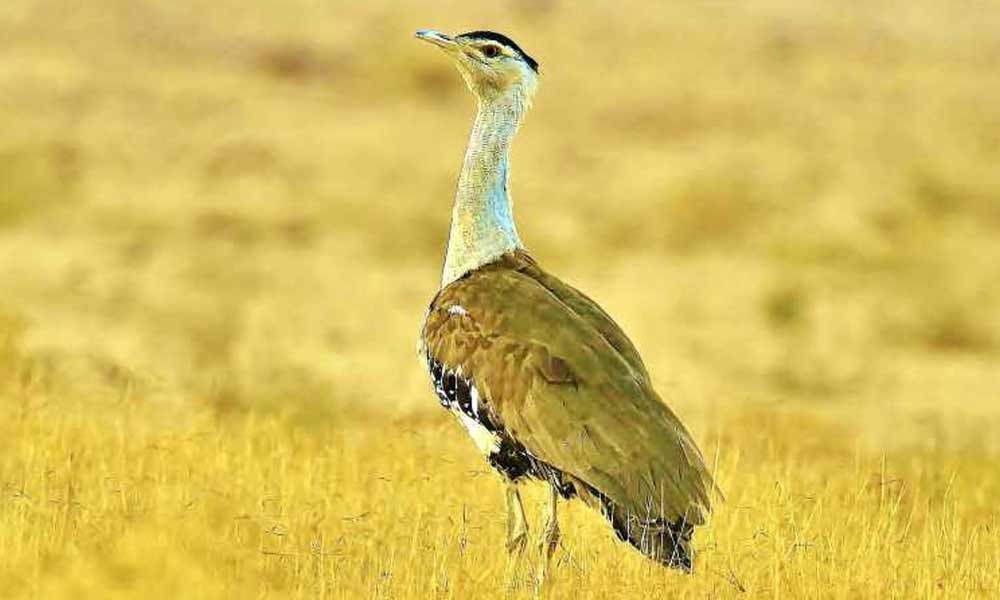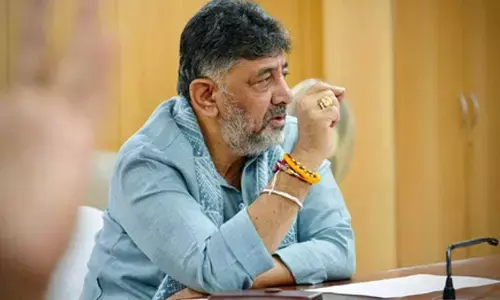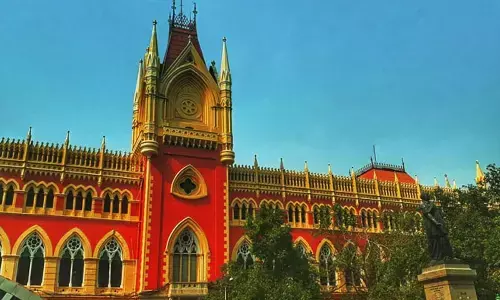Great Indian Bustard nearing extinction due to high voltage power lines: Ministry of Environment

The GIB population has been reduced by 75 per cent in the last 30 years, said the WII report which has compiled various studies conducted by researchers across the country.
NEW DELHI: The critically endangered Great Indian Bustard (GIB) is nearing extinction due to collision with high voltage power lines that criss-cross their flying path, according to a report by the Ministry of Environment.
The report, which has been prepared by the Wildlife Institute of India(WII), a statutory body under the ministry, said only 150 GIBs are left, with the maximum number in Jaisalmer.
They are dying at the rate of 15 per cent annually due to collision with high voltage power lines.
The GIB population has been reduced by 75 per cent in the last 30 years, said the WII report which has compiled various studies conducted by researchers across the country.
"Mortality of adult GIBs is high due to collision with power lines that criss-cross their flying path. All bustards are prone to collision due to their poor frontal vision and inability to see the power lines from a distance," it said.
WII's research has shown that power lines, particularly high voltage (33-440 KV) transmission lines with vertical alignment are the biggest threat to GIB as of now and their habitats have a high density of transmission lines because of the impetus on renewable energy production in GIB habitats of Rajasthan and Gujarat.
"The study recorded 5 GIB deaths in 2017-18 in Jaisalmer alone and calculated that 15 per cent of the GIB population may be dying because of this threat.
"Since the natural death rate of large bustards is 4-8 per cent, the current additive mortality rate due to transmission lines is significantly higher and if not controlled, can result in the species extinction," the report said.
The report was submitted by the ministry to the NGT on the plea of Bhanu Bansal, secretary of NGO Centre for Wildlife and Environmental Litigation (CWEL) seeking conservation of GIB to save them from extinction.
ALSO READ: Forest department to order survey of Great Indian Bustards in grassland districts of Karnataka
Referring to the report, Bansal said the need of the hour was to put the power lines underground and install bird diverters to save them from being electrocuted.
"Protection and conservation of GIB is the need of the hour. Report itself says that lakhs of birds die every year due to power lines. There is an urgent need to put bird diverters and underground the power lines to bring the mortality rate down," he said.
According to the report, "The Great Indian Bustard (GIB) is a critically endangered bird with less than 150 individuals left in India and the world and are in an urgent need of conservation actions."
It said that maximum number of GIBs were found in Jaisalmer and the Indian Army controlled field firing range near Pokhran, Rajasthan.
Other areas where they are found in less than 10 in number are Kutch district in Gujarat, Nagpur, Amravati and Solapur districts in Maharashtra, Bellary and Koppal districts in Karnataka and Kurnool district in Andhra Pradesh.
The GIB is one of the heaviest flying birds endemic to the Indian subcontinent.
They are primarily terrestrial birds with adult males as tall as 122 cm and weigh 11-15 kg and adult females reach up to 92 cm and weigh 4-7 kg, the WII said.
According to the report, the GIB lays one egg every 1-2 years and the success rate of these eggs is 60-70 per cent.
However, this rate has been reduced to 40-50 per cent due to predators like fox and dogs.
It also said that apart from the GIB, many other birds also die because of collision/electrocution with these transmission lines at the rate of 10 birds per km per month totalling nearly one lakh bird deaths annually in 4200 sq km.
Listing out other threats to the GIB, the report said irrigation and farming technology, mining, wind turbines and associated infrastructure growth have causes severe habitat degradation to birds, including GIB.
"Recent developments in irrigation and farming technologies have intensified agriculture and changed cropping practices from seasonal to year-round intensive crops.
"Because of frequent ploughing and cropping or use of pesticides, there is lack of food and vegetation cover to meet the ecological requirements of the species," it said.
The report suggested that there is a need to regulate such intensive agricultural land-uses to achieve long term GIB persistence.
It also said that ill-informed forestry practices by state forest departments such as plantation of exotic shrub/tree species in deserts and grasslands in the name of afforestation have also degraded the habitat of GIB and other open habitat species that prefer visibility and openness.
Keeping the threats in mind, the report has recommended to mitigate power transmission lines passing through priority bustard habitats identified by the WII by undergrounding cables or installing bird diverters to make them prominent to birds.
"This action must be expeditiously implemented in the short-term (1-3 years), as power-line mortality is currently the biggest threat to the species," the report said.
It also said that new wind turbines, solar farms (photovoltaic power stations) from priority GIB habitats should be disallowed and existing ones that are in the critical areas be removed.
Hailing the report, environmentalist Vikrant Tongad said the points raised in the report were commendable but the problem of high voltage power lines is killing several birds in the national capital also.
"High tension power lines are in Okhla Bird Sanctuary also which are killing other birds also. This is a serious issue. I appreciate this recommendation if they propose to put power lines underground," said Tongad, founder of NGO Social Action for Forests and Environment.
The government has released Rs 33 crore for the conservation of the GIB through a project, titled 'Habitat Improvement and Conservation Breeding of Great Indian Bustard-An Integrated Approach', for five years from the Compensatory Afforestation Fund Management and Planning Authority (CAMPA) for conservation, breeding of the GIB with technical support from the WII.



















